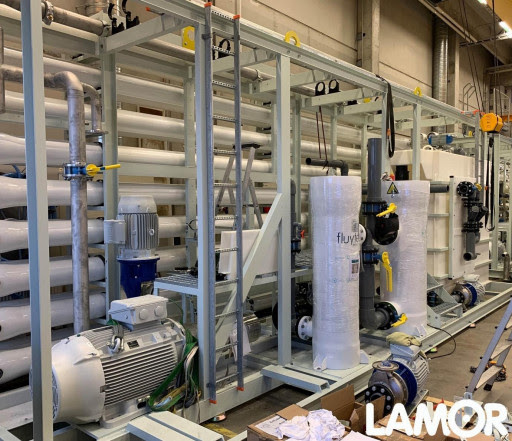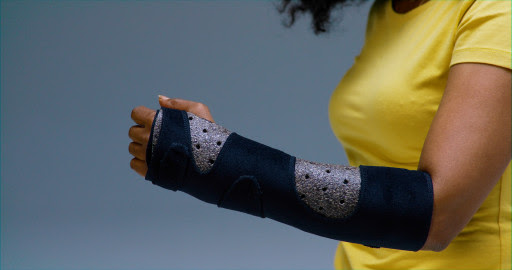- The VELUX Group has selected Schneider Electric to build accelerated decarbonization strategy to enable fast delivery on Lifetime Carbon Neutral commitment
- Extended partnership builds on previously announced renewable energy advisory services
Rueil-Malmaison (France), September 21 2021 – The VELUX Group, the world leader in roof windows and skylights, and Schneider Electric, the global leader in the digital transformation of energy management and automation, today announced that the companies have executed a new extended partnership agreement. The agreement will enable the VELUX Group to reach its company carbon neutral goal by 2030 and accelerate its plans to be Lifetime Carbon Neutral in response to an increasing need to proactively address climate change.
Building on the announcement made earlier this year that Schneider Electric will help VELUX source the equivalent of 100% renewable electricity by 2023 to achieve its RE100 target, under the new agreement, Schneider Electric will develop a global program detailing zero-carbon action plans for each of the VELUX Group’s factory sites to successfully reduce their energy use and scale renewable capacity.
“We, collectively – corporations, governments, and society – must do more to address the climate crisis and reduce our carbon emissions, and we must move faster,” said Jörn Neubert, Senior Vice President of Supply, the VELUX Group. “The VELUX Group is removing operational barriers – and we’ve established a significant, dedicated climate budget – to increase and prioritize our climate strategy and ambitions. We selected Schneider Electric as our partner in this journey because of our shared values and Schneider’s ability to help us develop and realize an accelerated global program. Our partnership will ensure that we move as quickly as possible.”
The broadened focus of the partnership will further the VELUX Group’s ambition to be 100% carbon neutral (scope 1 and 2) by 2030 – decades ahead of other corporate targets – and Lifetime Carbon Neutral by the Group’s 100-year anniversary in 2041. This pioneering commitment means the Group has committed to capture its historical carbon footprint, reduce its future carbon emissions in line with and beyond the prevailing climate science behind the Paris Agreement’s 1.5°C scenario, and partner with World Wide Fund for Nature (WWF) on forest conservation projects around the world. The VELUX Group is also working to halve carbon emissions across its value chain (scope 3) by 2030.
“It is our honor to be selected by the VELUX Group as their carbon neutrality partner,” said Christel Heydemann, EVP, Europe Operations, Schneider Electric. “Accelerated climate action is essential for us to avoid the worst impacts of global warming. We know it’s possible – today – to reach a 1.5°C warming scenario through proven decarbonization solutions like resource efficiency, onsite and offsite renewable energy procurement, and quality carbon credits and offsets. We commend the VELUX Group for recognizing the urgency of climate change, accelerating their climate ambitions, and setting the gears in motion to reach net-zero well before 2050.”
The three-year partnership includes all VELUX factory sites. Schneider Electric – recognized last January as the world’s most sustainable corporation by the Corporate Knights Global 100 Index – will develop a global decarbonization program, including the following:
- Energy assessment of all VELUX Group factory sites resulting in the development and implementation of zero-carbon action plans.
- Support of VELUX Group’s Energy Excellence program in accordance with ISO50001, improving energy efficiency activities and expanding onsite renewable heating and electricity capacity to phase out fossil fuels.
- Implementation of a global monitoring system through Schneider Electric’s EcoStruxure™ Resource Advisor to measure and analyze energy usage.
VELUX will pilot the zero-carbon action plans at two of the company’s top energy-consuming plants, which represent approximately 25% of all energy used in VELUX production: JTJ Sonneborn Industrie GmbH in Germany and NM Polska Sp. z o.o. in Poland. Significant investments will be made at these sites to convert to renewable heating sources by installing heat pumps powered by green electricity and using wood waste from certified (FSC/PEFC) forests produced on site. VELUX will also invest in onsite solar photovoltaic energy installations and continue to improve the sites’ energy efficiency by optimizing supply systems, production processes and energy management.
For media inquiries, please contact Kathrine Westermann, Senior Media Relations Manager, kathrine.westermann@velux.com
About the VELUX Group
For the past 80 years, the VELUX Group has created better living environments for people around the world; making the most of daylight and fresh air through the roof. Our product program includes roof windows and modular skylights, decorative blinds, sun screening products and roller shutters, as well as installation and smart home solutions. These products help to ensure a healthy indoor climate, for work and learning, for play and pleasure. We work globally – with sales and manufacturing operations in more than 40 countries and around 11,500 employees worldwide. The VELUX Group is owned by VKR Holding A/S, a limited company wholly owned by non-profit, charitable foundations (THE VELUX FOUNDATIONS) and family. In 2020, VKR Holding had total revenue of DKK 22.6 billion and THE VELUX FOUNDATIONS donated EUR 142 million in charitable grants.
For more information about VELUX Group, visit velux.com.
About Schneider Electric
Schneider’s purpose is to empower all to make the most of our energy and resources, bridging progress and sustainability for all. We call this Life Is On.
Our mission is to be your digital partner for Sustainability and Efficiency.
We drive digital transformation by integrating world-leading process and energy technologies, end-point to cloud connecting products, controls, software and services, across the entire lifecycle, enabling integrated company management, for homes, buildings, data centers, infrastructure and industries.
We are the most local of global companies. We are advocates of open standards and partnership ecosystems that are passionate about our shared Meaningful Purpose, Inclusive and Empowered values.
Follow us on:
Attachment




